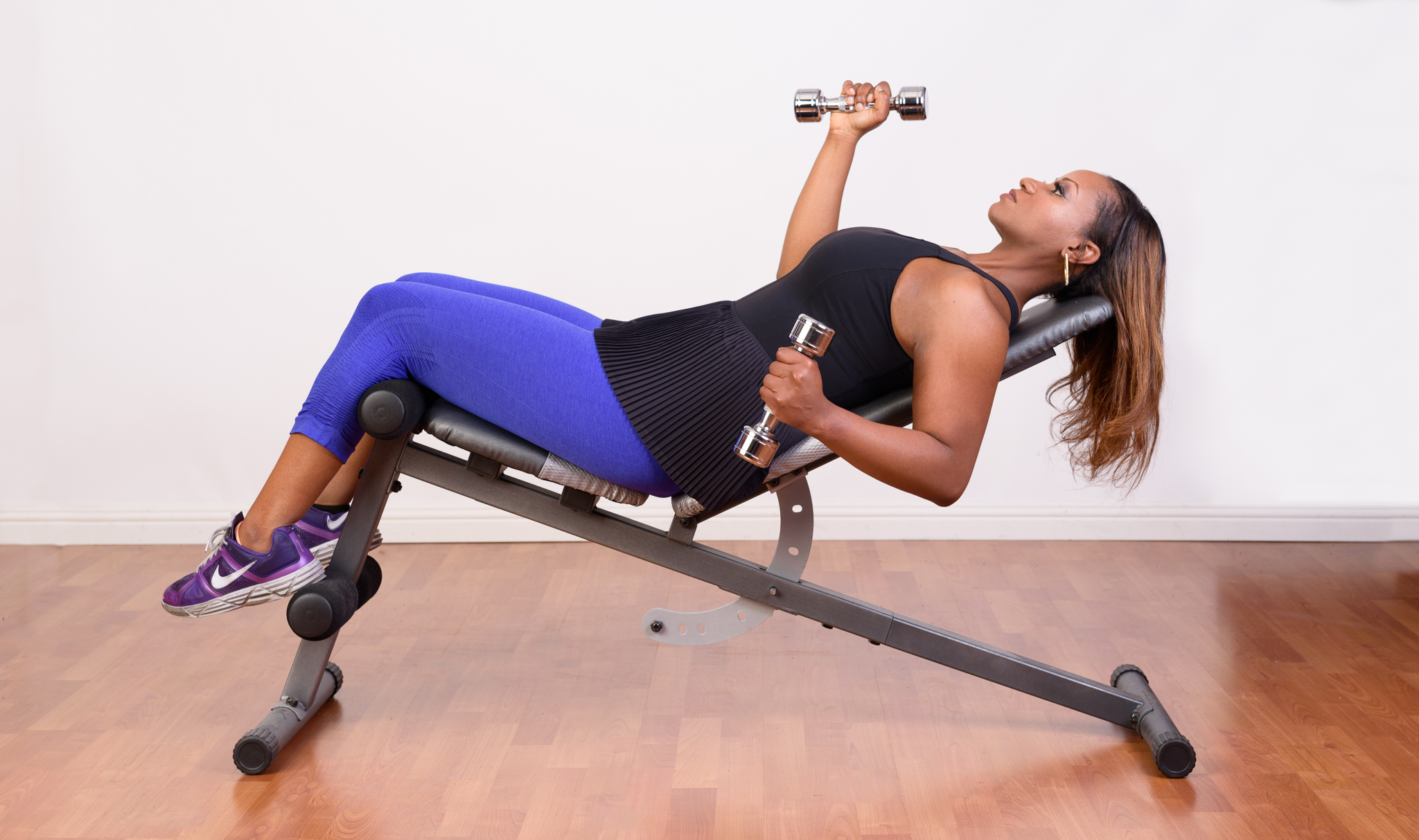All adults must strength train because strength is required in every part of our every day lives. You cannot get out of the car, play with your children, walk to work, climb stairs, or even vacuum your house if you do not have enough strength. You will find these tasks nearly impossible and you may even end up injured doing housework if you lack adequate strength. Remember as we get older, muscle loss is a very real danger so if you haven’t started a strength training routine, NOW is the time.
You know that you must strength train, but how can you do it safely, efficiently, and productively? I’m so glad you asked!
1. Work on your Flexibility and Range of Motion FIRST
In order for you to properly train your muscles, then they need to be at the proper length and tension. Unfortunately many of us have tight and shortened muscles due to our lifestyle, injury, the way we are built, etc. Therefore just jumping into a strength training routine without working on your range of motion increases the risk of injury and also does not provide the optimal conditions for training.
My advice for anyone beginning a strength training program is to work on your flexibility and range of motion for about 2 weeks. This will “loosen” you up and also give you more ideal training conditions.
I tell my clients that if we think of our muscles like rubber bands what happens if you put a rubber band in a freezer? The rubber band becomes stiff and not very mobile. If you tried to move the rubber band quickly, then it would probably not stretch very far. This is what inactivity and not strength training does to our muscles. The greatest threat to flexibility is the loss of muscle mass. We want our muscles flexible and mobile so that we can get maximum benefits out of our strength workouts.
Begin with Body Weight Exercises
I don’t believe there’s any other way to start a strength training program than with your own bodyweight. You can provide the Resistance!
One of my training mottos is:
Do it better, before you do it more – Geneva
I see no purpose in adding on an external load for the first 2-4 weeks of a program and someone is having problems squatting their own body weight. Depending on the individual, you can also use tools such as resistance bands or the TRX Suspension training during this period. Your initial body weight program should include 1-2 exercises the following.
- Squat
- Lunge (or split squat depending on leg strength and injury history)
- Push (Did someone say pushups???)
- Pull (Light Resistance Bands can be useful to get used to retracting the shoulders)
- Rotation
- Core Strength Exercise
This is enough to keep people busy for 2-4 weeks. Remember training is HIGHLY individual so if you notice that you’re progressing quickly, then you can add on other tools such as: Heavier Resistance Bands, Medicine Balls, Light Dumbbells, Body Bars, Etc.
Stimulate Don’t Annihilate
This is the mantra of 8x Mr. Olympia Lee Haney. Even though that’s an admirable accomplishment, That’s not why I admire Mr. Haney. I admire him because he is STILL active, healthy, and vibrant even into his 50’s. Many of the people in his field cannot say the same. They trained too heavy, with abysmal form, and were focused on destroying their muscles.
Another motto that I got from noted Canadian Coach Scott Abel is:
Your muscles work the weights. The weights aren’t working the muscles. – Coach Scott Abel
I will not turn this into a rant into stupid training but there’s a LOT of stupid training out on social media and in the gym. I have seen so many cringe worthy videos boasting of Personal Records with horrible form. All this does is promote overuse and repetitive stress injuries.
The weight should be challenging but not so heavy that your form and technique suffers. You should be able to work through the FULL range of Motion for your strength exercises. (That’s why #1 is so important)
Take the Time To Recover
More is not necessarily better. You need to give your body a chance to recover if you want to see strength gains. Constantly tearing your body down without a proper recovery is not only a great way to get injured but it’s also not allowing your body to restore itself.
On the days you don’t strength train, you can work on your flexibility, mobility, core strength, cardiovascular endurance, or take the time to rest.
Bonus Tip: Find someone who knows what they are doing and ask for help
If you’re brand new to strength training, then I think it’s worth the time to work with a fitness coach but you need to find someone who knows what they are doing. I’ve been in the industry for ten years and this past Fall I FINALLY learned how to Deadlift correctly. (Thanks Dr. Jonathan Mike!) I actually felt the muscles stretch to their proper length and felt the tension in my hamstrings…so it pays to actually get coaching from someone who knows what they are talking about.
If you have any questions feel free to e-mail me: fiercelyfitbyg@gmail.com









Leave A Comment